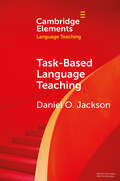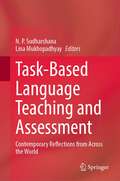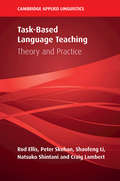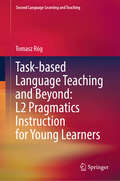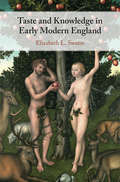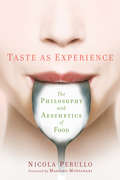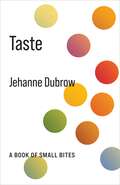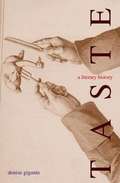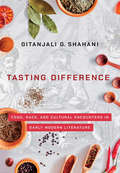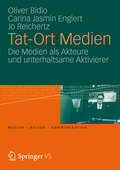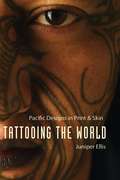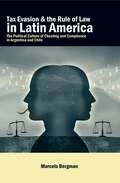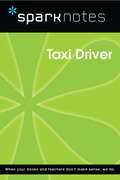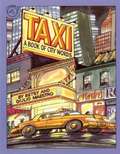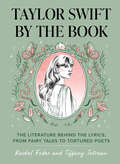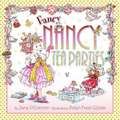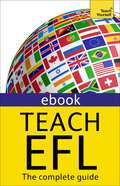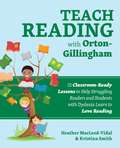- Table View
- List View
Tarjetas de vocabulario [Grado 1] (¡Arriba la Lectura!)
by Houghton Mifflin Harcourt Publishing CompanyNIMAC-sourced textbook
Tarjetas de vocabulario [Grado 2] (¡Arriba la Lectura!)
by Houghton Mifflin Harcourt Publishing CompanyNIMAC-sourced textbook
Tarjetas de vocabulario [Grado 4] (¡Arriba la Lectura!)
by Houghton Mifflin Harcourt Publishing CompanyNIMAC-sourced textbook
Tarjetas de vocabulario [Grado 5] (¡Arriba la Lectura!)
by Houghton Mifflin Harcourt Publishing CompanyNIMAC-sourced textbook
Tarjetas del abecedario [Grado K] (¡Arriba la Lectura!)
by Houghton Mifflin Harcourt Publishing CompanyNIMAC-sourced textbook
Task-Based Language Teaching (Elements in Language Teaching)
by Daniel O. JacksonThis Element is a guide to task-based language teaching (TBLT), for language instructors, teacher educators, and other interested parties. The work first provides clear definitions and principles related to communication task design. It then explains how tasks can inform all stages of curriculum development. Diverse, localized cases demonstrate the scope of task-based approaches. Recent research illustrates the impact of task design (complexity, mode) and task implementation (preparation, interaction, repetition) on various second language outcomes. The Element also describes particular challenges and opportunities for teachers using tasks. The epilogue considers the potential of TBLT to transform classrooms, institutions, and society.
Task-Based Language Teaching and Assessment: Contemporary Reflections from Across the World
by N. P. Sudharshana Lina MukhopadhyayThis book provides interdisciplinary perspectives on task-based language teaching (TBLT) and task-based language assessment (TBLA) in English as a second language (ESL) context. It discusses theoretical and experimental insights of TBLT and TBLA from cognitive, cognitive linguistic, and psycholinguistic viewpoints. The chapters, written by leading language teaching specialists in the field, introduce the reader to a comprehensive range of issues related to TBLT and TBLA such as curriculum design, materials development, and classroom teaching & testing. With interdisciplinary appeal, the book is a valuable resource for researchers in task-based language teaching and assessment. It is equally useful for teachers to whom it offers practical suggestions for designing tasks for teaching and testing.
Task-Based Language Teaching: Theory and Practice (Cambridge Applied Linguistics)
by Craig Lambert Rod Ellis Natsuko Shintani Peter Skehan Shaofeng LiTask-based language teaching is an approach which differs from traditional approaches by emphasising the importance of engaging learners' natural abilities for acquiring language incidentally through the performance of tasks that draw learners' attention to form. Drawing on the multiple perspectives and expertise of five leading authorities in the field, this book provides a comprehensive and balanced account of task-based language teaching (TBLT). Split into five sections, the book provides an historical account of the development of TBLT and introduces the key issues facing the area. A number of different theoretical perspectives that have informed TBLT are presented, followed by a discussion on key pedagogic aspects - syllabus design, methodology of a task-based lesson, and task-based assessment. The final sections consider the research that has investigated the effectiveness of TBLT, addresses critiques and suggest directions for future research. Task-based language teaching is now mandated by many educational authorities throughout the world and this book serves as a core source of information for researchers, teachers and students.
Task-based Language Teaching and Beyond: L2 Pragmatics Instruction for Young Learners (Second Language Learning and Teaching)
by Tomasz RógThis book provides a groundbreaking exploration of how task-based language teaching (TBLT) can effectively develop second language (L2) pragmatic competence in young learners. Bridging the gap between TBLT and L2 pragmatics, this volume addresses critical issues in language education, offering insights into teaching key speech acts. Specifically, it compares the outcomes of TBLT with the traditional PPP framework in teaching L2 speech acts to Polish learners of L2 English aged 8 to 9. Chapter 1 deals with pragmatics and pragmatic competence, highlighting its importance in effective communication and language use in social contexts. It addresses L2 pragmatics, the development of L2 pragmatic competence, and the challenges in teaching and assessing this competence. Chapter 2 overviews TBLT, its theoretical foundations, practical implementation, and related empirical research. It discusses the cognitive-interactionist and sociocultural perspectives on L2 acquisition and the effectiveness of tasks. Chapter 3 reviews empirical research on using tasks in teaching L2 pragmatics, especially to young learners. Chapter 4 details the research methodology used in the study, including the context, participants, target speech acts, data elicitation instruments, and analysis procedures. Chapter 5 presents the results of the study. Chapter 6 discusses the findings, their pedagogical implications, and the limitations of the study. Chapter 7 offers conclusions. Rich with pedagogical implications, the volume is an essential resource for researchers and practitioners interested in task-based and task-supported teaching, L2 pragmatics, and innovative approaches to teaching young learners.
Taste and Knowledge in Early Modern England
by Elizabeth L. SwannElizabeth Swann investigates the relationship between the physical sense of taste and taste as a figurative term associated with knowledge and judgment in early modern literature and culture. She argues that - unlike aesthetic taste in the eighteenth century - discriminative taste was entwined with embodied experience in this period. Although taste was tarnished by its associations with Adam and Eve's fall from Eden, it also functioned positively, as a source of useful, and potentially redemptive, literary, spiritual, experimental, and intersubjective knowledge. Taste and Knowledge in Early Modern England juxtaposes canonical literary works by authors such as Shakespeare with a broad range of medical, polemical, theological, philosophical, didactic, and dietetic sources. In doing so, the book reveals the central importance of taste to the experience and articulation of key developments in the literate, religious, and social cultures of the sixteenth and seventeenth centuries.
Taste as Experience: The Philosophy and Aesthetics of Food (Arts and Traditions of the Table: Perspectives on Culinary History)
by Nicola PerulloTaste as Experience puts the pleasure of food at the center of human experience. It shows how the sense of taste informs our preferences for and relationship to nature, pushes us toward ethical practices of consumption, and impresses upon us the importance of aesthetics. Eating is often dismissed as a necessary aspect of survival, and our personal enjoyment of food is considered a quirk. Nicola Perullo sees food as the only portion of the world we take in on a daily basis, constituting our first and most significant encounter with the earth. Perullo has long observed people's food practices and has listened to their food experiences. He draws on years of research to explain the complex meanings behind our food choices and the thinking that accompanies our gustatory actions. He also considers our indifference toward food as a force influencing us as much as engagement. For Perullo, taste is value and wisdom. It cannot be reduced to mere chemical or cultural factors but embodies the quality and quantity of our earthly experience.
Taste: A Book of Small Bites (No Limits)
by Jehanne DubrowTaste is a lyric meditation on one of our five senses, which we often take for granted. Structured as a series of “small bites,” the book considers the ways that we ingest the world, how we come to know ourselves and others through the daily act of tasting.Through flavorful explorations of the sweet, the sour, the salty, the bitter, and umami, Jehanne Dubrow reflects on the nature of taste. In a series of short, interdisciplinary essays, she blends personal experience with analysis of poetry, fiction, music, and the visual arts, as well as religious and philosophical texts. Dubrow considers the science of taste and how taste transforms from a physical sensation into a metaphor for discernment.Taste is organized not so much as a linear dinner served in courses but as a meal consisting of meze, small plates of intensely flavored discourse.
Taste: A Literary History
by Denise GiganteWhile most accounts of aesthetic history avoid the gustatory aspects of taste, this book rewrites standard history to uncover the constitutive and dramatic tension between appetite and aesthetics at the heart of British literary tradition. From Milton through the Romantics, the metaphor of taste serves to mediate aesthetic judgment and consumerism, gusto and snobbery, gastronomes and gluttons, vampires and vegetarians, as well as the philosophy and physiology of food. The author advances a theory of taste based on Milton's model of the human as consumer (and digester) of food, words, and other commodities--a consumer whose tasteful, subliminal self remains haunted by its own corporeality. Radically rereading Wordsworth's feeding mind, Lamb's gastronomical essays, Byron's cannibals and other deviant diners, and Kantian nausea, Taste situates Romanticism as a period that naturally saw the rise of the restaurant and the pleasures of the table as a cultural field for the practice of aesthetics.
Tasting Difference: Food, Race, and Cultural Encounters in Early Modern Literature
by Gitanjali G. ShahaniTasting Difference examines early modern discourses of racial, cultural, and religious difference that emerged in the wake of contact with foreign peoples and foreign foods from across the globe. Gitanjali Shahani reimagines the contact zone between Western Europe and the global South in culinary terms, emphasizing the gut rather than the gaze in colonial encounters.From household manuals that instructed English housewives how to use newly imported foodstuffs to "the spicèd Indian air" of A Midsummer Night's Dream, from the repurposing of Othello as an early modern pitchman for coffee in ballads to the performance of disgust in travel narratives, Shahani shows how early modern genres negotiated the allure and danger of foreign tastes.Turning maxims such as "We are what we eat" on their head, Shahani asks how did we (the colonized subjects) become what you (the colonizing subjects) eat? How did we become alternately the object of fear and appetite, loathing and craving? Shahani takes us back several centuries to the process by which food came to be inscribed with racial character and the racial other came to be marked as edible, showing how the racializing of food began in an era well before chicken tikka masala and Balti cuisine. Bringing into conversation critical paradigms in early modern studies, food studies, and postcolonial studies, she argues that it is in the writing on food and eating that we see among the earliest configurations of racial difference, and it is experienced both as a different taste and as a taste of difference.
Tat-Ort Medien
by Oliver Bidlo Carina Jasmin Englert Jo ReichertzDer Alltag menschlichen Zusammenlebens in modernen (nicht nur) westlichen Gesellschaften ist durch eine tiefgreifende und umfassende Mediatisierung gekennzeichnet: Medien spielen bei der kommunikativen Konstruktion von Wirklichkeit eine immer gewichtigere Rolle - vor allem dadurch, dass sie neben den Kommunikationsinhalten auch die Kommunikationsformen und das kommunikative und gesellschaftliche Handeln maßgeblich beeinflussen. Medien werden auch im Bereich der Inneren Sicherheit zunehmend eigenständige Akteure, die auf die Sicherheit ihrer Kunden achten und in deren Interesse selbst aktiv werden. Medien werden darüber hinaus auch Aktivierer, die ihre Kunden unterhaltsam dazu anhalten, sich regelkonform selbst zu führen oder aber sich in Maßen an der ,Arbeit' der Medien selbst zu beteiligen. Wir sind Zeitzeugen einer tief greifenden Mediatisierung der Sicherheitspolitik.
Tattooing the World: Pacific Designs in Print and Skin
by Juniper EllisIn the 1830s an Irishman named James F. O'Connell acquired a full-body tattoo while living as a castaway in the Pacific. The tattoo featured traditional patterns that, to native Pohnpeians, defined O'Connell's life; they made him wholly human. Yet upon traveling to New York, these markings singled him out as a freak. His tattoos frightened women and children, and ministers warned their congregations that viewing O'Connell's markings would cause the ink to transfer to the skin of their unborn children. In many ways, O'Connell's story exemplifies the unique history of the modern tattoo, which began in the Pacific and then spread throughout the world. No matter what form it has taken, the tattoo has always embodied social standing, aesthetics, ethics, culture, gender, and sexuality. Tattoos are personal and corporate, private and public. They mark the profane and the sacred, the extravagant and the essential, the playful and the political. From the Pacific islands to the world at large, tattoos are a symbolic and often provocative form of expression and communication.Tattooing the World is the first book on tattoo literature and culture. Juniper Ellis traces the origins and significance of modern tattoo in the works of nineteenth- and twentieth-century artists, travelers, missionaries, scientists, and such writers as Herman Melville, Margaret Mead, Albert Wendt, and Sia Figiel. Traditional Pacific tattoo patterns are formed using an array of well-defined motifs. They place the individual in a particular community and often convey genealogy and ideas of the sacred. However, outside of the Pacific, those who wear and view tattoos determine their meaning and interpret their design differently. Reading indigenous historiography alongside Western travelogue and other writings, Ellis paints a surprising portrait of how culture has been etched both on the human form and on a body of literature.
Tax Evasion and the Rule of Law in Latin America: The Political Culture of Cheating and Compliance in Argentina and Chile (G - Reference, Information and Interdisciplinary Subjects)
by Marcelo BergmanFew tasks are as crucial for the future of democracy in Latin America—and, indeed, in other underdeveloped areas of the world—as strengthening the rule of law and reforming the system of taxation.In this book, Marcelo Bergman shows how success in getting citizens to pay their taxes is related intimately to the social norms that undergird the rule of law. The threat of legal sanctions is itself insufficient to motivate compliance, he argues. That kind of deterrence works best when citizens already have other reasons to want to comply, based on their beliefs about what is fair and about how their fellow citizens are behaving. The problem of "free riding," which arises when cheaters can count on enough suckers to pay their taxes so they can avoid doing so and still benefit from the government’s supply of public goods, cannot be reversed just by stringent law, because the success of governmental enforcement ultimately depends on the social equilibrium that predominates in each country. Culture and state effectiveness are inherently linked.Using a wealth of new data drawn from his own multidimensional research involving game theory, statistical models, surveys, and simulations, Bergman compares Argentina and Chile to show how, in two societies that otherwise share much in common, the differing traditions of rule of law explain why so many citizens evade paying taxes in Argentina—and why, in Chile, most citizens comply with the law. In the concluding chapter, he draws implications for public policy from the empirical findings and generalizes his argument to other societies in Africa, Asia, and Eastern Europe.
Taxi Driver (SparkNotes Film Guide)
by SparkNotesTaxi Driver (SparkNotes Film Guide) Making the reading experience fun! SparkNotes Film Guides are one-stop guides to great works of film–masterpieces that are the foundations of filmmaking and film studies. Inside each guide you&’ll find thorough, insightful overviews of films from a variety of genres, styles, and time periods. Each film guide contains:Information about the director and the context in which the film was made Thoughtful analysis of major characters Details about themes, motifs, and symbols Explanations of the most important lines of dialogue In-depth discussions about what makes a film so remarkable SparkNotes Film Guides are an invaluable resource for students or anyone who wants to gain a deeper understanding of the great films they know and love.
Taxi: A Book Of City Words
by Giulio Maestro Betsy MaestroThe reader is introduced to such typical city words as "theater,""museum," "office building," and "train station" as a taxi travels through a hectic workday in and around the city.
Taylor Swift by the Book: The Literature Behind the Lyrics, from Fairy Tales to Tortured Poets
by Rachel Feder Tiffany TatreauFrom a Robert Frost poem on her debut album to the myth of Cassandra on The Tortured Poets Department, Taylor Swift&’s lyrics are filled with literary connections.Make sure you're catching them all with this expert guide to the novels, poems, and plays that influence her songwriting.Let a literature professor and a musical theater artist guide you through the Taylor Swift canon—from Shakespeare to the Brontë sisters to Daphne du Maurier! Learn what "New Romantics" has to do with the old RomanticsGet to know the Gothic monsters haunting MidnightsSpot Taylor's many Great Gatsby referencesDiscover what Taylor Swift and Emily Dickinson have in commonAnd find your new favorite tortured poet!Packed with fun facts, entertaining analysis, and literary-themed playlists that fans will love, Taylor Swift by the Book will turn anyone from a Taylor Swift lover into a Taylor Swift scholar.With full-color illustrations highlighting the literary eras of Dr. Swift (yes, she has an honorary PhD), it&’s a perfect gift for the Swiftie in your life.
Tea Parties (I Can Read!)
by Jane O'Connor<P>Ages 4-7 <P>You're invited! <P>Join in the fun with hostess extraordinaire Fancy Nancy! With a little imagination, you too can create an exquisite tea party that is perfect for your friends and family. <P>R.S.V.P. oui, oui, oui! <P>"Whenever you feel like celebrating, that's the perfect time for a tea party!" - FANCY NANCY <P>Now FANCY NANCY, hostess extraordinaire, shares all her favorite tea-party tips with you, from what to wear, which refreshments to serve, and how to make absolutely everything--even paper plates and plastic spoons--trés elegant! Before you can say "Ooh la la!" you too will be hosting tea parties that are the talk of the neighborhood!
Teach English as a Foreign Language (New Edition): eBook
by David RiddellThis new edition of Teach EFL is the ultimate practical reference guide to teaching English as a Foreign Language. 'Riddell's book is a classic - it answers all those questions new language teachers have....covers an amazing amount in a clear accessible way.'David Carr, Director of Teacher TrainingInternational House LondonThis book is packed with information on:-effective teaching techniques.-sound classroom management.-practical lesson planning.-successful job hunting and career development.This is an indispensable book for all new and experienced EFL teachers: a step-by-step guide on what to teach and how to teach it. This edition has been fully revised to include:-up-to-date information on technology as an aid to learning. -comprehensive information on the increasingly popular task-based learning.-invaluable advice on making the transition from learning to teaching.-clear guidance on ongoing professional development.-useful examples of teaching in different international contexts.Rely on Teach Yourself, trusted by learners for over 75 years.
Teach Reading with Orton-Gillingham: 65 Classroom-Ready Lessons to Help Struggling Readers and Students with Dyslexia Learn to Love Reading
by Kristina Smith Heather MacLeod-VidalGive young readers the tools they need to improve reading fluency and master letter-sound relationships with this teacher-friendly book of multisensory lessons based on the proven Orton-Gillingham (OG) reading approach. Bringing Orton-Gillingham and multisensory teaching into your classroom has never been easier. With this big book of easy-to-follow lesson plans, you can help your struggling students or those with dyslexia start reading today. Teach Reading with Orton-Gillingham offers research-based suggestions and instructions to make reading multisensory and engaging. Whether it&’s using sand or shaving cream, there are tons of fun, proven ideas and strategies to help your students better understand key concepts like letter-sound relationships. With 9 unique units and 72 different lesson plans, each unit will include lessons, tips, pictures, reference charts, suggested teaching timelines, and more resources. Also included are strategies for customizing this approach, whether you&’re working one-on-one, within small groups, or in a whole-class setting.

